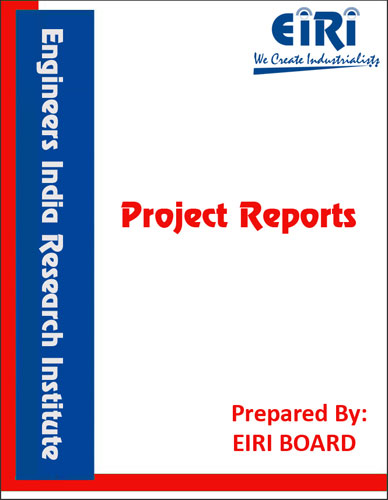SHOWROOM CUM WORKSHOP & SERVICE CENTRE
The project report includes Present Market Position and Expected Future Demand, Market Size, Statistics, Trends, SWOT Analysis and Forecasts. Report provides a comprehensive analysis from industry covering detailed reporting and evaluates the position of the industry by providing insights to the SWOT analysis of the industry.
We can prepare PROJECT REPORT as per your INVESTMENT PLAN for BANK LOAN REQUIREMENT and INDUSTRY ANALYSIS. All reports are prepared by highly qualified consultants and verified by a panel of experts.
Have Query? Click Here to Chat
Industry Expert is Online, Chat with him for more detail.

A car dealership or vehicle local distribution is a business that sells new or used cars at the retail level, based on a dealership contract with an automaker or its sales subsidiary. It employs automobile salespeople to sell their automotive vehicles. It may also provide maintenance services for cars, and employ automotive technicians to stock and sell spare automobile parts and process warranty claims Car dealerships were traditionally large lots located out of town or on the edge of town centers and which relied on the skills of sales staff to sell vehicles. However, that model has begun to change and a number of automotive manufacturers have shifted the focus of their franchised retailers on to branding and technology.
TOYOTA has moved to create a standard look for its dealerships around the world and to introduce ‘product geniuses’ to liaise with customers., TOYOTA has experimented with a hi-tech showroom that allows customers to configure and experience cars on 1:1 scale digital screens, has opened city centre brand stores to showcase its vehicles has opened city centre galleries where prospective customers can view cars that can only be ordered online.
The Indian automobile market is witnessing a surge in competition and intense demand cyclist with huge pressure on margins.
The impact of this is particularly severe on the dealerships, who are even passing on discounts to the customers at the cost of the dealer margins in an effort to retain market share. And despite volumes rising in specific segments, the disproportionately high efforts in selling/ servicing is seeing dealer profitability being severely eroded. And to make matters worse, the lack of career or compensation growth in dealerships is driving away good talent who could have offset the industry challenge: Dealerships need to put in place an organization structure that is geared to achieve their business objectives. Roles and KPIs need to be strongly aligned to strategic goals and people competencies mapped to specific positions. Dealerships will also need to invest in capability building and training of its workforce to be Dealers are at a critical inflexion point today and need heightened strategic interventions. Dealers need to drive strategic direction setting and explore diversification opportunities.
At the same time, they need to work closely with the OEM to chart out their segment specific growth requirements, skill set enhancement plans and operational improvements. This will require significant time and effort from the dealers. As dealers are critical customer touch points, the OEMs will also need to support them with time and resources in this initiative.
Commitment and maturity shown by the dealers will be critical in order to derive sustained benefits over an extended period of time, help them break the growth ceiling and maintain their viability in an increasingly competitive market. better prepared for the challenges ahe Dealerships will need to adopt a holistic approach that aligns their strategic plans, organization structure and processes, people capabilities and business processes to drive and enable growth. Strategic Growth: Dealerships need to have an in-depth understanding of their OEM’s strategic objectives in order to identify their own strategic thrust areas. That should form the basis for a comprehensive growth strategy that charts out the segment specific growth requirements (that includes adding new product lines or exiting from existing ones), strategic plans and support required from the OEMs. In addition, dealerships may also need to look at diversification opportunities with non-auto OEMs that would help offset the inherent cyclicity of the automotive industry ad. a lead Dealerships need to focus on improving the effectiveness of their sales and service processes. Introduction of customer contact points, remote of sales executives and IT enablement of the sales process could help dealers improve their sales coverage, increase conversion ratios and improve sales productivity and channel ROI for dealerships. Similarly, service workshop initiatives like Kaizen and process workflow improvement can vastly improve service productivity and customer satisfaction while focused service marketing activities can enhance service revenues.
INTRODUCTION
BECOME A DEALER
HOW TO OPEN A TOYOTA DEALERSHIP
AUTOREPAIR & SERVICE STATION CONCEPTS
B.I.S. SPECIFICATION
PROCESS FLOW SHEET FOR SERVICE STATION
PROCESS OF MANUFACTURE
MANAGEMENT DEVELOPMENT IN AN AUTOMOBILE REPAIR WORKSHOP
MAJOR SERVICABLE COMPONENTS
PERIODIC MAINTENANCE SCHEDULE
MARKET SURVEY
MARKET FOR TOYOTA
INDIA SALES ANALYSIS: JANUARY 2015
226 TOYOTA CAR DEALERS AND SHOWROOMS AVAILABLE IN INDIA
PLANT LAYOUT
SUPPLIERS OF PLANT AND MACHINERY FOR TOYOTA AUTOMOBILE
ACCESSORIES: INTERIORS & EXTERIORS
SUPPLIERS OF AUTO GARAGE EQUIPMENTS
APPENDIX – A:
1. COST OF PLANT ECONOMICS
2. LAND & BUILDING
3. PLANT AND MACHINERY
4. FIXED CAPITAL INVESTMENT
5. RAW MATERIAL
6. SALARY AND WAGES
7. UTILITIES AND OVERHEADS
8. TOTAL WORKING CAPITAL
9. COST OF PRODUCTION
10. PROFITABILITY ANALYSIS
11. BREAK EVEN POINT
12. RESOURCES OF FINANCE
13. INTEREST CHART
14. DEPRECIATION CHART
15. CASH FLOW STATEMENT
16. PROJECTED BALANCE SHEET



